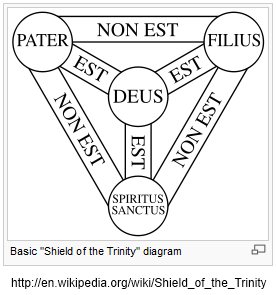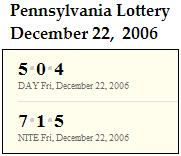
… twó flocks, twó folds—black, white; ' right, wrong; reckon but, reck but, mind
But thése two; wáre of a wórld where bút these ' twó tell, each off the óther….
— "Spelt from Sibyl's Leaves," by Gerard Manley Hopkins

Related material:
Max Black — "Beginners are taught that a set having three members is a single thing, wholly constituted by its members but distinct from them. After this, the theological doctrine of the Trinity as 'three in one' should be child's play." ("The Elusiveness of Sets," Review of Metaphysics, June 1971, p. 615– as quoted by Bill Vallicella)
Edward Gibbon, Decline and Fall of the Roman Empire, Chapter XXI —
Gibbon, discussing the theology of the Trinity, defines perichoresis as
“… the internal connection and spiritual penetration which indissolubly unites the divine persons59 ….
59 … The  or ‘circumincessio,’ is perhaps the deepest and darkest corner of the whole theological abyss.”
or ‘circumincessio,’ is perhaps the deepest and darkest corner of the whole theological abyss.”
”Whoever fights monsters should see to it that in the process he does not become a monster. And when you look long into an abyss, the abyss also looks into you.”
– Friedrich Nietzsche, Beyond Good and Evil, section 146, translated by Walter Kaufmann










 or ‘circumincessio,’ is perhaps the deepest and darkest corner of the whole theological abyss.”
or ‘circumincessio,’ is perhaps the deepest and darkest corner of the whole theological abyss.”



